For years and years I’ve worn my hair long, mostly. What does this say about me?
Recently I read a book titled The Naked Woman, A Study of the Female Body, by Desmond Morris. The information in this book was tr5amendously enlightening as well as entertaining. I’ve chosen to write a few highlights from this book in order to peak your interest on a subject that you may otherwise think you know well but, really, if you are anything like me, then there’s so much more that you will discover that you don’t know, and you will want to read on. Things like why did we develop certain physical features throughout our evolution? What’s their purpose? Are they really necessary in this day and age? It’s the type of information that will enable you to look at your body differently, and understand your own features. I cannot explore every body part in this article because I realize that readers respond better to shorter blogs, so I will write about one thing only, and in future blogs I’ll discuss other body parts. ( Warning, I still wrote a lot, but it’s so damn interesting!)
Have you ever thought about your hair in terms of why you have it in the first place, and how long it’s really meant to be? Well, before I get into this in greater detail I will write about some interesting studies conducted by Morris, which explain the evolution of hair on our body. Apparently, our ability to thrive is due to a process called “neoteny,” which enables humans to retain juvenile characteristics well into their adult life. Men for instance are more childlike in their behavior, and women display neoteny in their physical traits. Men tend to be accident prone—but this is no accident—if anything, it’s this particular risk-taking element that was extremely valuable in primeval times. Men went hunting, and therefore were forced to take risks. On the other hand, primeval women could not afford to risk their lives because it would’ve reduced the breeding rate of their tribes. As a result of this, women developed other skills that benefited their roles in society; they became fluent in verbal communication. Developing a better sense of vision, smell, hearing, touch,—as well as becoming better nurturers, and better able to withstand disease.
Physically, men became stronger and more athletic, while females’ bodies became better equipped for reproduction purposes; becoming better protected against starvation by developing a curvaceous body. Wonderful, you can use this as an excuse for those extra pounds on your body, any day. By retaining fat, women also retained infantile characteristics, and because males have been programmed through evolution to protect their young, they became protective over their mates as a result of their childlike traits. For this reason females have the higher pitch voices (on most occasions, if they haven’t smoked two packs a day for a couple of decades). They have childlike facial features and hair pattern—looking smoother—sort of like children. Hmmm, with a few exceptions I would think, otherwise things like tweezers and body wax would not exist.
Do you really think that before the advent of sharp objects humans even really cut their hair? Probably not. It’s often quite peculiar to see the illustrations created by anthropologists who have somewhat mislead us by creating an image of humans sporting short hair, when realistically it must have been exceedingly long and wild-looking. But from an evolutionary stand point why did we need such long hair in the first place? What kind of survival advantages did long hair provide us with? It is believed that primeval humans who were day-time hunters needed a huge mop of hair to protect them from the harsh sun; the rest of their body had less hair, so by sweating they could cool off faster. In the northern, cooler regions, people’s long hair protected them from the cold. Humans adapted to different climates and this set humans on specific evolutionary paths, which ultimately lead to different races. Our bodies became modified in order to better survive the elements. Once modification took place, it was important to maintain the change, and one of the quickest ways for the races to identify the differences was by varying the human pattern. This is how we developed all sorts of hair: wooly, crinkly, wavy etc., and this helped in labeling humans as different from one another. However, these days, as we’ve learned to tame our environment says Morris, with the right clothing, use of fire, central heating, air conditioning etc., those differences are not necessary any longer. There is no need to keep apart and we tend to mix together mostly. Eventually, these very isolating mechanisms will disappear altogether—we’ll all have the same hair one day.
Alright, now to the part you really wanted to read.
Sutherland sisters with the World’s longest hair, 19th century.
Fact: Hair grows for six years, rests for three, and then falls out. If left untrimmed, our hair may grow up to 3.5 feet long before it drops out.
Not sure how long the goat hairstyle trend lasted?
Women’s hair has been making headlines for centuries; hair has been the subject of so many different fashion trends; whether we choose to trim it, extend it, straighten it, color it—hair has been women’s crowning glory and also the subject of religious taboos. In earlier times, these hair trends stuck for long periods of time, but these days the speed in which a fashion trend changes is almost overnight, and there is no single theme that sets us apart as was the case in the past.
We have evidence that during the Stone Age people experimented with hair styles; there are carvings of humans wearing their hair with a middle parting, or even braided to one side.
Forget big breasts when a tall wig meant everything.
Wearing your hair neutral is very rare, and primarily seen in unsophisticated societies. For the most part women style their hair and dress it up in some way or other. Big hair draws attention, it makes a woman seem taller, more conspicuous. Five-thousand years ago, high ranking Egyptian women would shave off their hair and wear a wig, as did Roman women in order to emphasize their social status. A later trend the Romans adopted, was to wear wigs that were made from the heads of people whose country was defeated by the Roman army. During the eighteenth century, wigs became so ornate and big that it had a huge impact on society as a whole. Doorways had to be raised in order to enable the wig wearers to pass through, the structure of carriages had to be altered as well; beds were redesigned to accommodate women who opted to rest with their wigs on. The wigs were very expensive and a definite show of status.
Anna Nicole sporting 1980s big hair.
The 1980s marked the return of the big hair, women favored this specific look because it tended to soften their facial features—it made their faces appear smaller—childlike and more attractive. A more sophisticated method of hair enlargement has been hair extensions.
Studies have shown that the different hair styles adopted by women say a lot about their character, it might sound like Morris is generalizing a bit, but if you think about it, it does make sense. Hair enables you to express your personal style—it’s a way to present yourself to the world.
What does your hairstyle say about you?
Most women want to look natural and feel free, but will nevertheless trouble themselves for a special occasion. If attending a wedding, funeral, job interview etc., the hair strategy then changes into a more controlled style. This is when women tend to wear their hair up, to show a degree of social standing, discipline and control. It sends the message of “I am important; I am serious.”
The governess look.
A step further is wearing the hair in a tight bun at all times, and never letting it loose in public. Keeping hair in a bun evokes a feeling of control, also known as the “governess look,” it’s the look you want to achieve when you want to impose authority, but it also de-feminizes women. It’s a hairdo that cannot be ruffled or stroked, making them look unapproachable and untouchable. Part of me disagrees with Morris on this point because I cannot help but think of ballet dancers and their hair strategy—they too wear it up in a tight bun, yet when I look at them I see vulnerability and beauty.
The bob hairdo is a fun look, and originally, a favorite amongst flappers in the 1920s, also showing up again in the 1960s. You can’t really alter it much, put it up, or tie it back and the message behind such a look is that those women are active and carefree.
Halle Barry, has worn her hair short mostly.
In 1970 the shorter hair got a remake—looking much more severe. It was a common feminist strategy, an assertive display of women in the workforce seeking to be treated with more respect by their male counterparts. During the 1990s the short hairdo softened, those women were saying: “I am still disciplined, but I do not have to give up my femininity to be a top player in this world!” Women who choose a close-cropped look are saying: “look at me, I don’t need long hair to look pretty,” a display of vanity at times or a rebel who does not conform to conventional fashion. Men are usually threatened by this look. (Women undergoing chemotherapy obviously do not fall under this category.)
The no-hair look such as shaving one’s hair off has often been used as a form of punishment used in correctional institutions; it’s also the marks of slavery, or subordination to some sort of deity.
The requirement to wear a hat or scarf before entering a church dates back to the times when women had to hide their hair, because of its capacity to arouse men. In Islamic law, women are required to cover their heads completely at all times, never showing one strand of hair, and if they do, they can be severely punished for it in some countries. Orthodox Jewish women cover their heads in public, but opt to wear a very realistic looking wig and this is a way for them to obey a religious rule, but also adapted it to the 21st century more or less.
The quintessential blond bombshell, Marilyn Monroe.
90% of women who color their hair choose blond—amazing if you think of this number, but light-haired women seldom want to go dark. The desire to become a blond has to do with visual signalling; it creates a childlike appeal that men naturally desire most, from an evolutionary perspective, childlike features promote their desire to take care of you. People in their youth tend to look a lot lighter than when they become adult. Light hair appeal is so strong that it has lead to more artificial blonds in the world than real ones. The fact is that blond hair is so much finer and softer than darker hair, therefore making it more sensuous in moments of intimate body touch. Blonds have 140,000 hairs on their heads because their hair is so much finer, and brunettes have 108,000, while red-heads have 90,000 because their hair is much coarser. This theory of fine hair extends to the rest of the body as well, as blonds’ armpits and pubic hair tends to be much softer and silkier and thus more enjoyable during moments of great intimacy. As a brunette, I can only say that the razor and wax have been greatly appreciated by me, and have successfully diluted those differences between blondes and brunettes.
The irony here is that although so many women choose blond, it doesn’t mean that their hair has become finer and softer. Marilyn Monroe went so far as bleaching her pubic hair to match her platinum head of hair in her attempt to bask in that image that blonds portray—that infamous child-like blond vulnerability. Morris though goes on to quote a commentator from the 1960s who said: “If a man is serious about a girl he wants her to be natural. Anything artificial does not appeal to a serious thinking man . . . Generally speaking he prefers a blonde for a mistress and a brunette for a wife. Brunettes have more integrity.”
My honey hair.
I think that this would be a good point to end this chapter about women’s hairdos. Although, I have do mention a cute story from childhood; when I was young I used to have honey colored hair, but I was totally mesmerized by my aunts light blond hair (my paternal grandfather was blond). I recall getting lots of compliments about my coloring, I had olive skin and very light honey hair, my granny’s friends would call me a Greek princess, but my aunts hair was the real deal in my eyes. One day I sat on my aunts lap staring at her admiringly, and I told her that we’re were very lucky to be the only blonds in the family. I suppose that as a young child I veered toward the blond hair because it probably represented princes hair, like in the fairy tales that I would read. These days my hair is much darker, it’s hard to believe that I had such light hair, there’s absolutely nothing princes-like about my hair these days. Mostly, I’m concerned with keeping my hair nice and healthy and the color is of very little concern to me. Coconut oil has proven to be a wonderful hair treatment, and I use it twice a week at least. The results are lustrous, thick, shiny hair. I strongly recommend it.
If you have enjoyed my writing and interpretation of ideas, then be sure to check out my books. I thank all of my subscribers for loyally reading my material and giving me a greater sense of purpose.

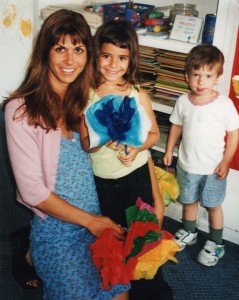
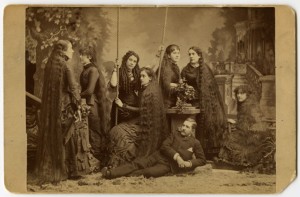
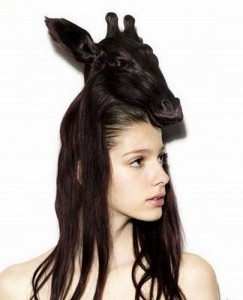
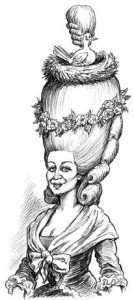
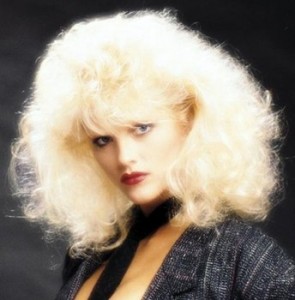
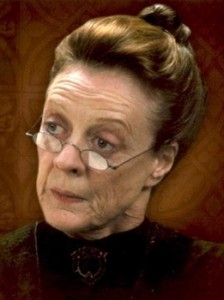
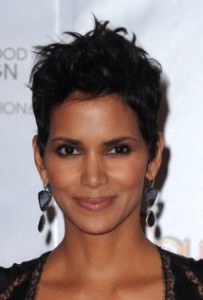
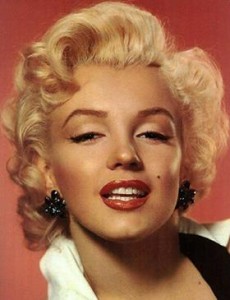
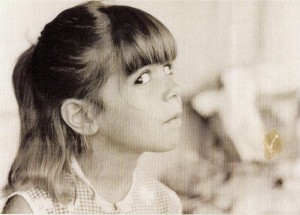
Leave a Reply
You must be logged in to post a comment.